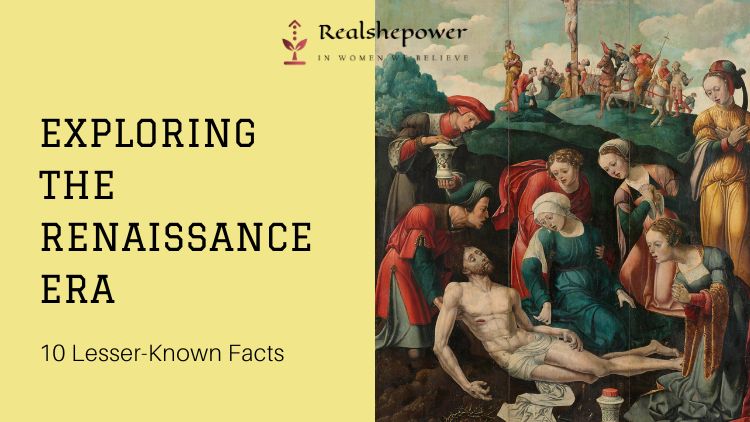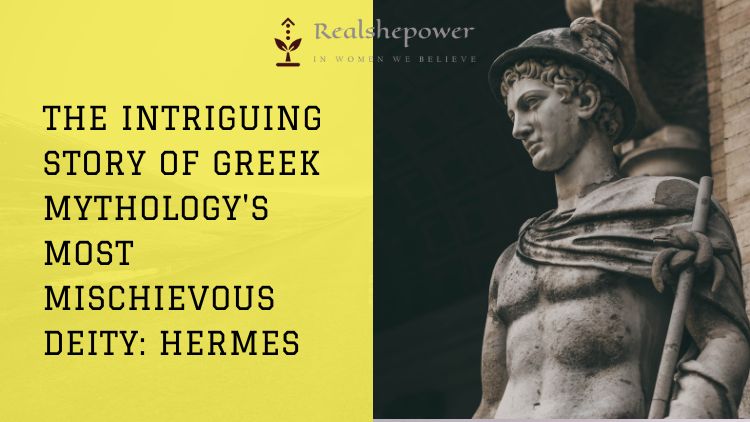10 Interesting and Lesser-Known Facts About the Renaissance


Picture this: the year is 1500, and you’re strolling through the streets of Florence, Italy. The air is filled with the scent of fresh flowers and warm bread from the local bakery. You can hear the sound of horse-drawn carriages passing by, and you catch a glimpse of a group of artists huddled together, sketching and discussing their latest works.
This is the Renaissance, a time of innovation, creativity, and genius. It was a period of explosive cultural, artistic, and scientific growth that transformed the world in ways that still impact us today.
You may have learned about the Renaissance in school, but there is so much more to uncover. Did you know that the Medici family, one of the most influential families of the time, were bankers and patrons of the arts? Or that Leonardo da Vinci not only painted the famous Mona Lisa but also invented flying machines and robots? These are just a few of the unknown facts and hidden gems of the Renaissance that we’ll explore in this article.
So, put on your finest velvet robe, grab a goblet of wine, and get ready to be transported back in time to a world of creativity and genius.
10 interesting and lesser-known facts about the Renaissance:
- The term “Renaissance” wasn’t used during the period itself. It was actually coined by French historian Jules Michelet in the 19th century to describe the cultural and artistic movement of the 14th to 17th centuries.
- The Renaissance wasn’t just limited to Italy. While Italy is often seen as the birthplace of the Renaissance, similar movements occurred in other parts of Europe, including Germany, England, and France.
- Many famous Renaissance artists were also scientists and inventors. Leonardo da Vinci, for example, was not only a master painter, but also a skilled engineer, architect, and inventor.
- The Renaissance was marked by a resurgence of interest in classical Greek and Roman culture. However, many ancient texts were lost during the Middle Ages, and much of what we know about classical culture was preserved by Islamic scholars in the Middle East.
- The Renaissance saw the rise of the printing press, which allowed for the widespread distribution of knowledge and ideas. This helped to spread the ideas of the Renaissance beyond the wealthy and educated elite and into the broader population.
- The Renaissance also saw the development of modern banking and finance. The Medici family, for example, were not only patrons of the arts, but also skilled bankers who helped to fund many of the great artistic and cultural works of the era.
- The Renaissance was a time of great exploration and discovery. European explorers like Christopher Columbus and Vasco da Gama opened up new trade routes and discovered new lands, leading to the colonization and exploitation of many parts of the world.
- The Renaissance was not universally praised at the time. Many conservative thinkers saw it as a time of moral decay and cultural decline, and feared that the focus on humanism and individualism would lead to the breakdown of social order.
- The Renaissance had a profound impact on the development of modern science. Many of the great scientific minds of the era, such as Galileo Galilei and Nicolaus Copernicus, were influenced by the humanist ideas and focus on reason and empirical observation that characterized the Renaissance.
- The legacy of the Renaissance can still be seen today in many aspects of Western culture, from art and architecture to science and technology. Its emphasis on humanism, individualism, and the pursuit of knowledge and understanding continue to shape our world today.
Now let’s move on to some more frequently asked questions about the Renaissance, shall we?
-
What was the Renaissance, and when did it take place?
The Renaissance was a period of artistic, cultural, and scientific growth that took place in Europe from the 14th to the 17th century.
-
Who were some of the most influential artists of the Renaissance?
Leonardo da Vinci, Michelangelo, and Raphael are often considered the “big three” of Renaissance art, but there were many other influential artists during this time period, including Sandro Botticelli, Titian, Albrecht Dürer, and Jan van Eyck.
-
What was the impact of the Renaissance on women?
During the Renaissance, women’s roles were largely confined to the domestic sphere, and few had access to education or professional opportunities. However, there were notable exceptions, such as the poet and scholar Christine de Pizan, who challenged prevailing attitudes about women’s inferiority and advocated for their education and empowerment.
-
How did the Renaissance impact religion?
The Renaissance was a time of significant religious change, as humanist ideas challenged traditional Christian beliefs and practices. This led to the Protestant Reformation in the 16th century, which split the Western Church into Catholic and Protestant factions.
-
What was the role of the Medici family during the Renaissance?
The Medici family were bankers and patrons of the arts, and played a major role in the development of the modern banking system and the rise of the merchant class.
-
What was the role of patronage in the Renaissance?
Patronage was critical to the success of Renaissance artists and thinkers, as wealthy patrons provided financial support and commissions for their work. This allowed artists to experiment and develop new techniques and styles, and also helped to spread humanist ideas throughout Europe.
-
What impact did the Renaissance have on science and technology?
The Renaissance was a time of significant advances in science and technology, as thinkers and inventors developed new ideas and technologies that transformed society. Some of the most significant developments of the Renaissance include the printing press, the telescope, and the discovery of the circulation of blood.
So there you have it, a brief tour through some of the lesser-known facts and frequently asked questions about the Renaissance. It truly was a fascinating period in history, and one that we continue to study and learn from to this day.
Who is Hermes? The Greek God with a Thousand Faces

Hermes is one of the most fascinating figures in Greek mythology. In this article, we will delve into the history, myths, and cultural significance of this intriguing deity.
